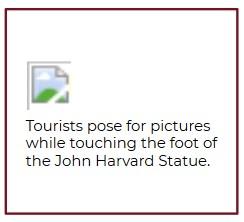Tips to write good alt-text
In the realm of accessible communications, it is important to describe visuals so that everyone can access the full meaning of your content.
Alt text is a short written description that describes the meaningful content of an image so those who can’t visually see it will know what is in the photo. Crafting good alt text also helps create an inclusive reading experience for all. Here are several tips to help you create effective alt text.
Decorative images
Avoid describing purely decorative images such as logos, borders, or backgrounds, as they are purely aesthetic and are not essential to understand the message you are trying to convey.
Clear structure
Start with a general overview of the image before delving into specific details, while maintaining clarity throughout the description.
Clear and concise
Ensure that your alt text clearly and succinctly describes the image. Also, avoid phrases like "Image of" or "Picture of," as screen readers will announce if an image is detected.
Consider context
Tailor your alt text to the context in which the image appears, including the audience, surrounding text, related images, and other factors that can influence the description.
Write for the intended audience
Take into account the age and interests of the intended audience when writing image descriptions to make your description easily understood.
Focus on Key Information
Highlight the most important elements of the image to convey the essential message without focusing on describing every minor detail.
Avoid redundancy
If the surrounding text already describes the image, use alt text to provide additional information or context instead of repeating what's already present. On the other hand, if there is text within an image write it out in the description.
Use present tense and action verbs
Engage readers by using present tense and action verbs to vividly describe what is happening in the image.
Be objective
Stick to factual description of what is visible in the image. Focus on actions rather than intentions, and avoid adding personal opinions or biases.
Don't use captions as alt-text
Captions should not replace alt text, as they may not accurately convey information about the image. Additionally, do not add alt-text information unrelated to the image, such as keywords for marketing.
Example of descriptive alt-text
Below is an example of good descriptive alt-text:

While these tips are not exhaustive, asking yourself the following questions will guide you in writing effective alt text.
- Why is this image here?
- What information is it trying to convey?
- What purpose does it fulfill?
- If I could not use the image, what words would I use to convey the same message?
References
1. Video tutorial: text alternatives (YouTube)
2. Complex images tutorial (W3C)
3. Alt texts: the ultimate guide (axess lab)
4. Non-text Content







